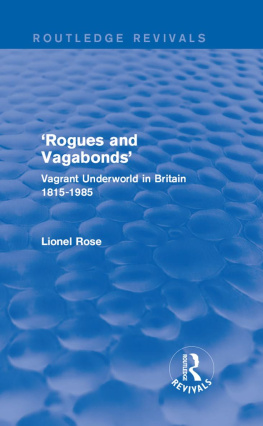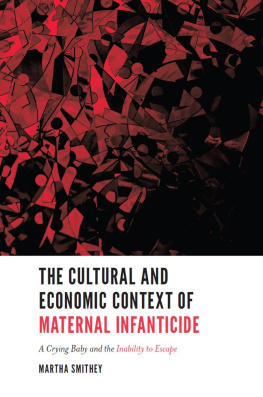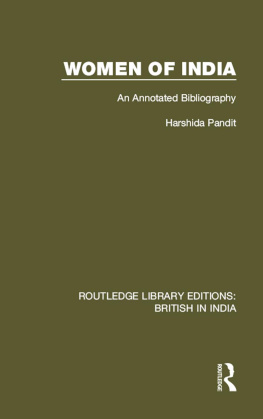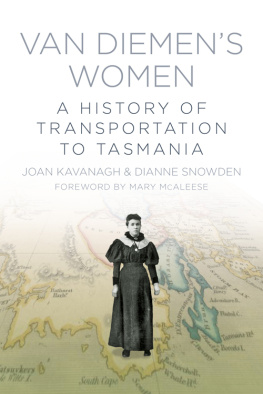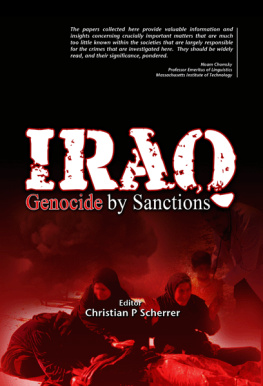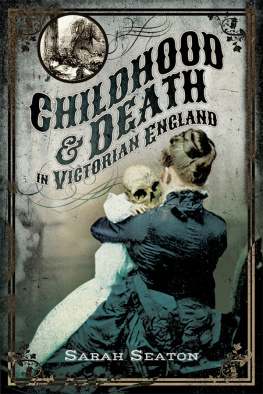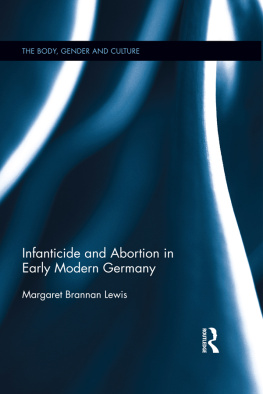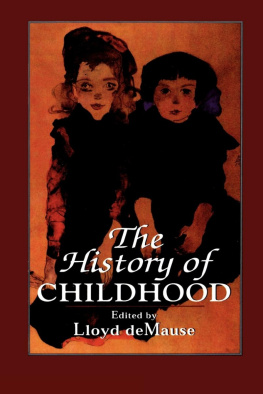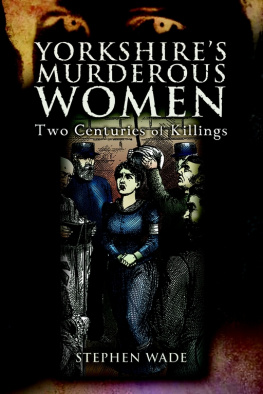ROUTLEDGE LIBRARY EDITIONS: THE HISTORY OF CRIME AND PUNISHMENT
Volume 7
THE MASSACRE OF THE INNOCENTS
THE MASSACRE OF THE INNOCENTS
Infanticide in Britain 18001939
LIONEL ROSE
First published in 1986 by Routledge & Kegan Paul Plc
This edition first published in 2016
by Routledge
2 Park Square, Milton Park, Abingdon, Oxon OX14 4RN
and by Routledge
711 Third Avenue, New York, NY 10017
Routledge is an imprint of the Taylor & Francis Group, an informa business
1986 Lionel Rose
All rights reserved. No part of this book may be reprinted or reproduced or utilised in any form or by any electronic, mechanical, or other means, now known or hereafter invented, including photocopying and recording, or in any information storage or retrieval system, without permission in writing from the publishers.
Trademark notice: Product or corporate names may be trademarks or registered trademarks, and are used only for identification and explanation without intent to infringe.
British Library Cataloguing in Publication Data
A catalogue record for this book is available from the British Library
ISBN: 978-1-138-94552-4 (Set)
ISBN: 978-1-315-67131-4 (Set) (ebk)
ISBN: 978-1-138-94503-6 (Volume 7) (hbk)
ISBN: 978-1-138-94506-7 (Volume 7) (pbk)
ISBN: 978-1-315-67160-4 (Volume 7) (ebk)
Publishers Note
The publisher has gone to great lengths to ensure the quality of this reprint but points out that some imperfections in the original copies may be apparent.
Disclaimer
The publisher has made every effort to trace copyright holders and would welcome correspondence from those they have been unable to trace.
The massacre of the innocents
Infanticide in Britain 18001939
Lionel Rose
First published in 1986
by Routledge & Kegan Paul plc
14 Leicester Square, London WC2H 7PH, England
9 Park Street, Boston, Mass. 02108, USA and
Broadway House, Newtown Road,
Henley on Thames, Oxon RG9 1EN, England
Set in Baskerville 10/llpt
by Columns of Reading
and printed in Great Britain
by St Edmundsbury Press,
Bury St Edmunds, Suffolk
Lionel Rose 1986
No part of this book may be reproduced in
any form without permission from the publisher,
except for the quotation of brief passages
in criticism
Library of Congress Cataloging in Publication data
Rose, Lionel, 1944-
The massacre of the innocents.
Bibliography: p.
Includes index.
1. InfanticideGreat Britain-History
19th century. 2. InfanticideGreat Britain
History20th century. I. Title.
HV6541.G7R67 1986 363.4 85-19596
British Library CIP Data also available
ISBN 071020339X
Contents
I wish to record my especial appreciation to the following for advice, co-operation or service in the preparation of this book:
Miss Sally Sainsbury of the Department of Social Science and Administration at the London School of Economics; Dr Michael Rose of the History Department, Manchester University; Mrs Katharine Clark of Lewes, Sussex, who allowed me to use material from the diary of her ancestor, Edward Watson, in the preparation of ; Miss G. Jones of the (now defunct) library of the Royal Society of Health; Mrs Doreen Elwell, for an efficient and speedy job of typing; Rona and David Gottesmann for the indexing.
In connection with the illustrations I would like to thank:
The Librarians of the NSPCC for their helpful assistance, in particular Miss Christine Smakowska, Chief Librarian, who went out of her way to assist me, and for permission to reproduce .
My thanks also to Havering Education Authority for the leave of absence that enabled me to complete the book.
And finally the warmest thanks to Mr Andrew Wheatcroft of Routledge & Kegan Paul, who saw potential in this work and was instrumental in rescuing my initial research potterings from years of oblivion in a drawer.
In January 1984 a babys body was found in a plastic bag, deposited in a litter bin in Sutton, Surrey. In March came news of the discovery of a badly burned body of a new-born baby in a field at Bramford, Ipswich. A few weeks later the mutilated body of a baby was found in a refuse skip on a factory site at Misterton, Doncaster.
Such accounts received only a brief paragraph in the press, and, of their type, form only a fraction of all the stories of babies killed in rage, or under stress by parents or parents lovers, that periodically crop up in the press. More commonly come accounts of live babies abandoned in places where the desperate parents intend that they should be found and taken care of: outside a police station, in a phone box, in a hospital lavatory these are a few instances in recent times; and the police approach generally is to regard the mother as needing psychological and social help rather than to think of her as a criminal.
Babies under 1 year old today are four times as likely as other age groups to be victims of homicide (murder, manslaughter, infanticide) and even this figure is a very pale reflection of a phenomenon that once stained the social record of Christian Europe, which tended both figuratively and literally to sweep the problem under the rubbish tips and dung heaps where so many babies bodies were hidden. This book starts in 1800, but its theme can be traced back through the ages; and indeed forms an integral part of the foundation myth of many great cultures: Romulus and Remus, the abandoned babes suckled by a she-wolf, as originators of the Roman civilisation; Moses, the foundling in the bullrushes, as the Biblical deliverer of the Jews; and the baby Jesus who was saved from Herods soldiers.
Leaping the centuries, we find that such was the prevalence of infanticide in Stuart England that a draconian law passed in 1624 automatically presumed that the mother of a bastard was guilty of murder if she had tried to conceal the birth by secreting its corpse;
In the eighteenth century the subject of infanticide and baby dropping (the dumping of anonymous babies in exposed places) revolves round the efforts of the former sea captain Thomas Coram to establish a Foundling Hospital where desperate women could bring their babies. He faced much prejudice from people who thought that the existence of such repositories would encourage sexual irresponsibility and increase the problem of unwanted births. Corams intention was to confine admissions to the infants of innocent, deceived girls (I shall dub them first-time lapsers in this book) whose lives would otherwise be ruined. The London Foundling Hospital was founded in 1739, and after a very chequered history, it followed Corams principles of selection only from 1801. But its relief was only a drop in the ocean, for in the nineteenth century it was taking in about 40 babies a year. Despite its emotively appealing name, it was not strictly a foundling institution, as the mothers had to come for prior interviews. Such charity did not by any means necessarily conserve infants lives, as the crowding of babies in institutions, especially when deprived of breast-milk, could produce a frightful mortality rate. Ecclesiastical foundling hospitals in Catholic countries could have infant death rates as high as 80 per cent in Paris and 90 per cent in Dublin just prior to 1800.


